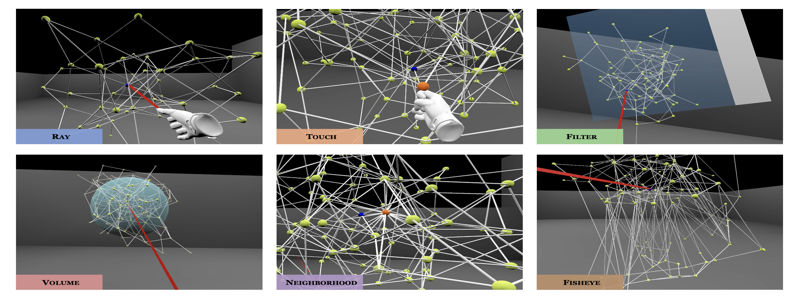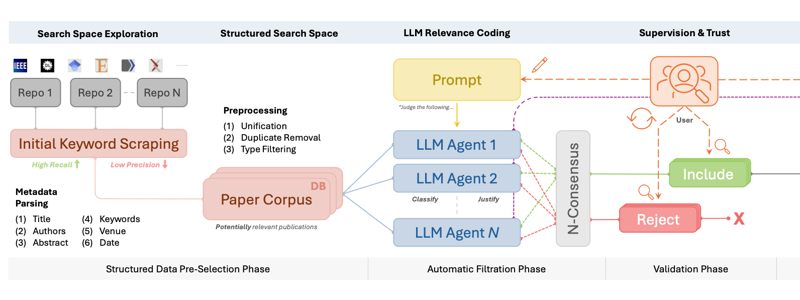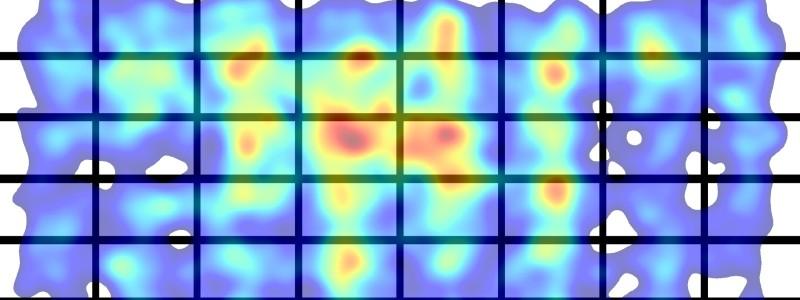
Evaluating Node Selection Techniques for Network Visualizations in Virtual Reality
L. Joos, U. Durdu, J. Wieland, H. Reiterer, D. A. Keim, J. Fuchs, M. T. Fischer
ACM Symposium on Spatial User Interaction, DOI:10.1145/3677386.3682102, 2024Virtual Reality Network Analysis Interaction Evaluation Selection
The visual analysis of networks is crucial for domain experts to understand their structure, investigate attributes, and formulate new hypotheses. Effective visual exploration relies heavily on interaction, particularly the selection of individual nodes. While node selection in 2D environments is relatively straightforward, immersive 3D environments like Virtual Reality (VR) introduce additional challenges such as clutter, occlusion, and depth perception, complicating node selection. State-of-the-art VR network analysis systems predominantly utilize a ray-based selection method controlled via VR controllers. Although effective for small and sparse graphs, this method struggles with larger and denser network visualizations. To address this limitation and enhance node selection in cluttered immersive environments, we present and compare six distinct node selection techniques through a user study involving 18 participants. Our findings reveal significant differences in the efficiency, physical effort, and user preference of these techniques, particularly in relation to graph complexity. Notably, the filter plane metaphor emerged as the superior method for selecting nodes in dense graphs. These insights advance the field of effective network exploration in immersive environments, and our validations provide a foundation for future research on general object manipulation in virtual 3D spaces. Our work informs the design of more efficient and user-friendly VR tools, ultimately enhancing the usability and effectiveness of immersive network analysis systems.
Related Publication







